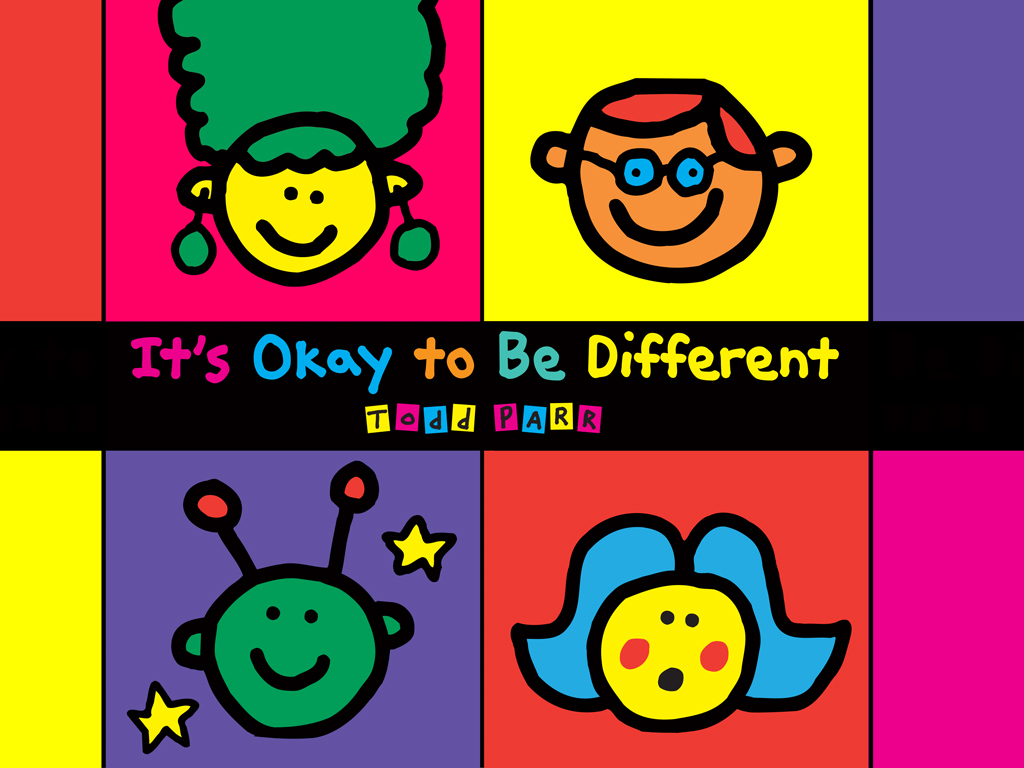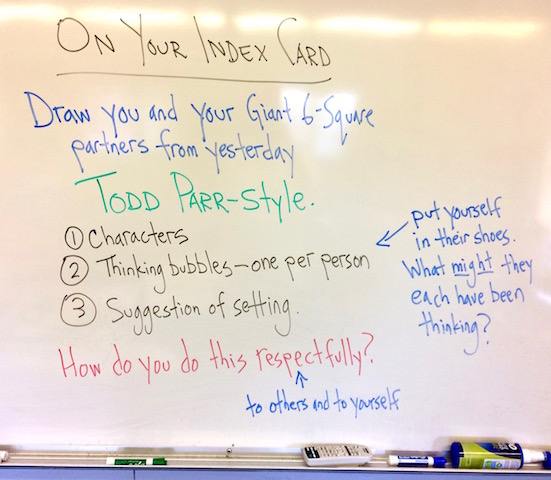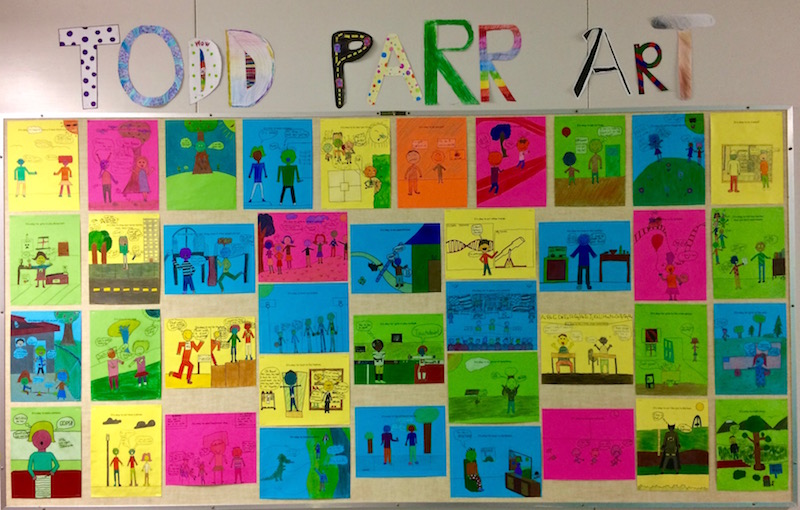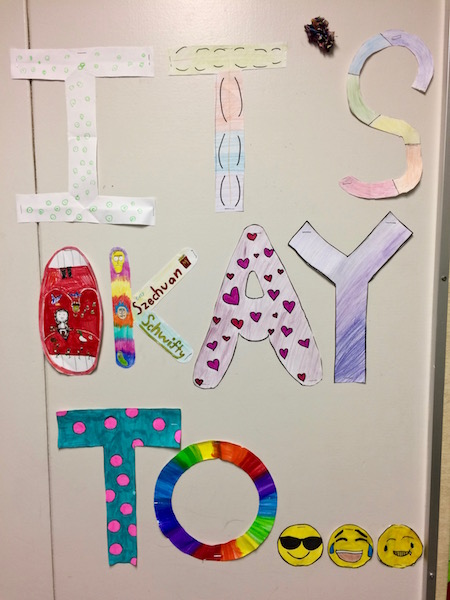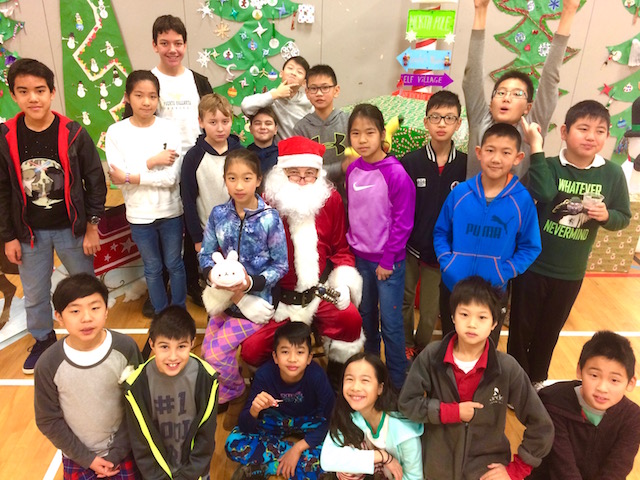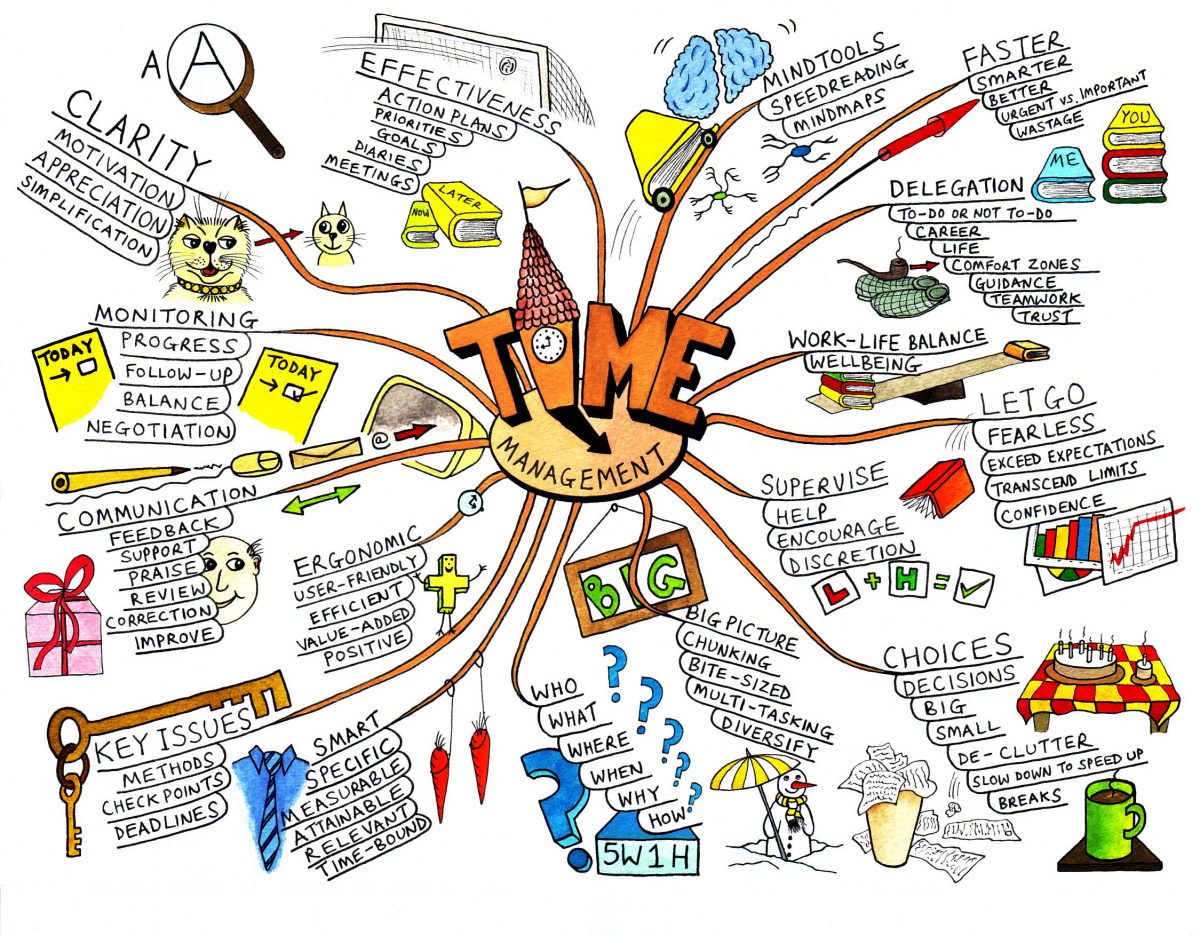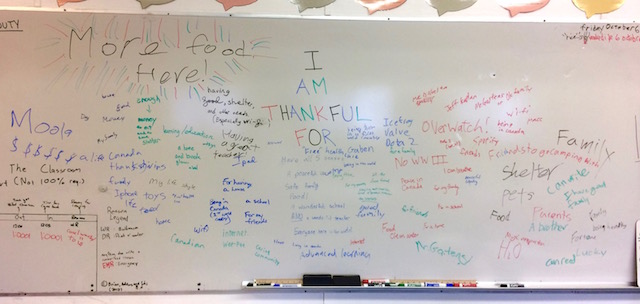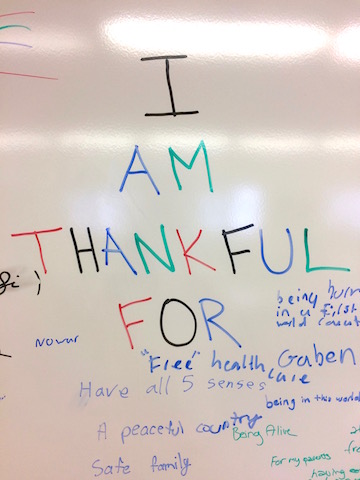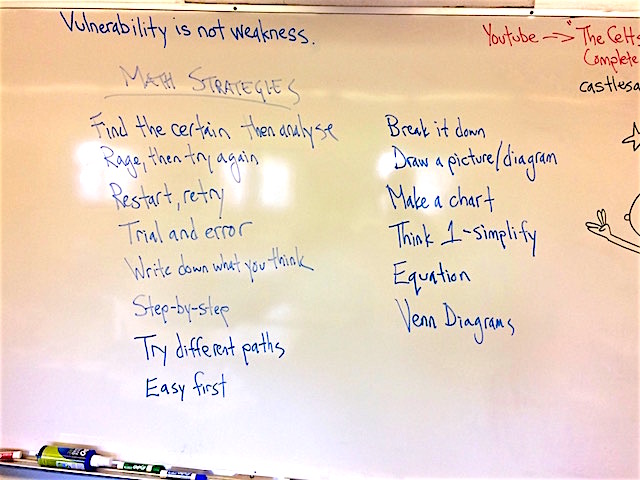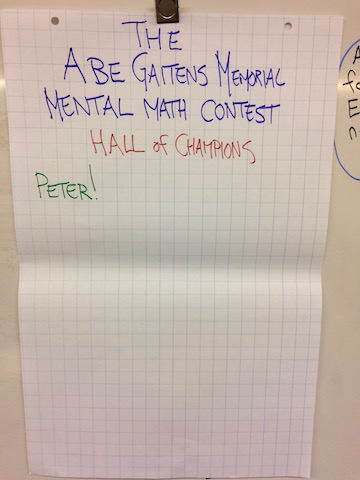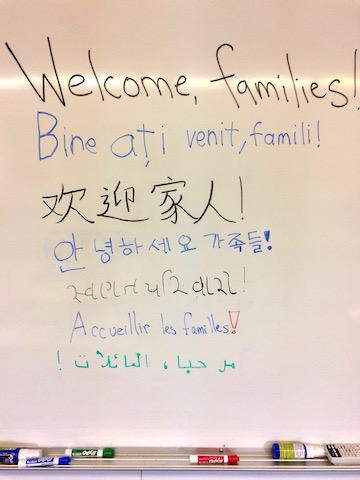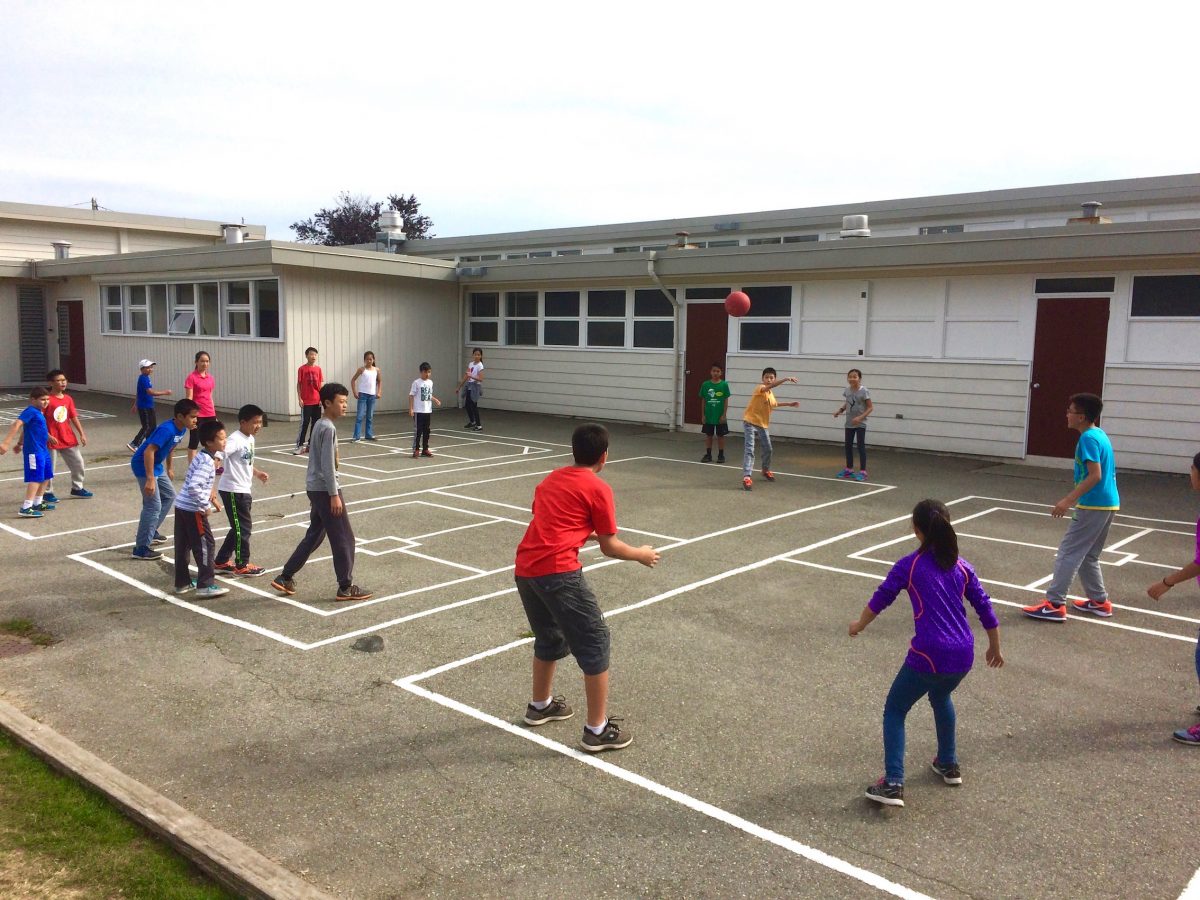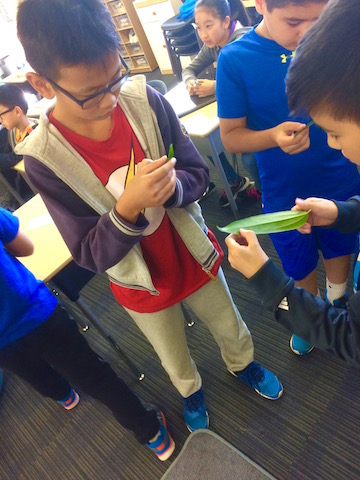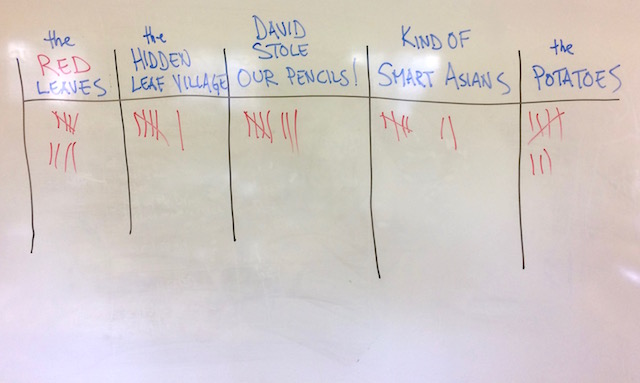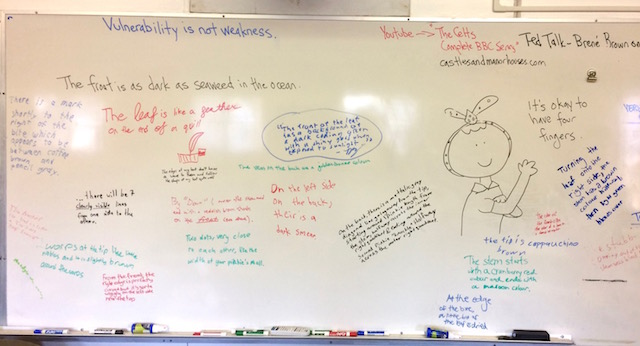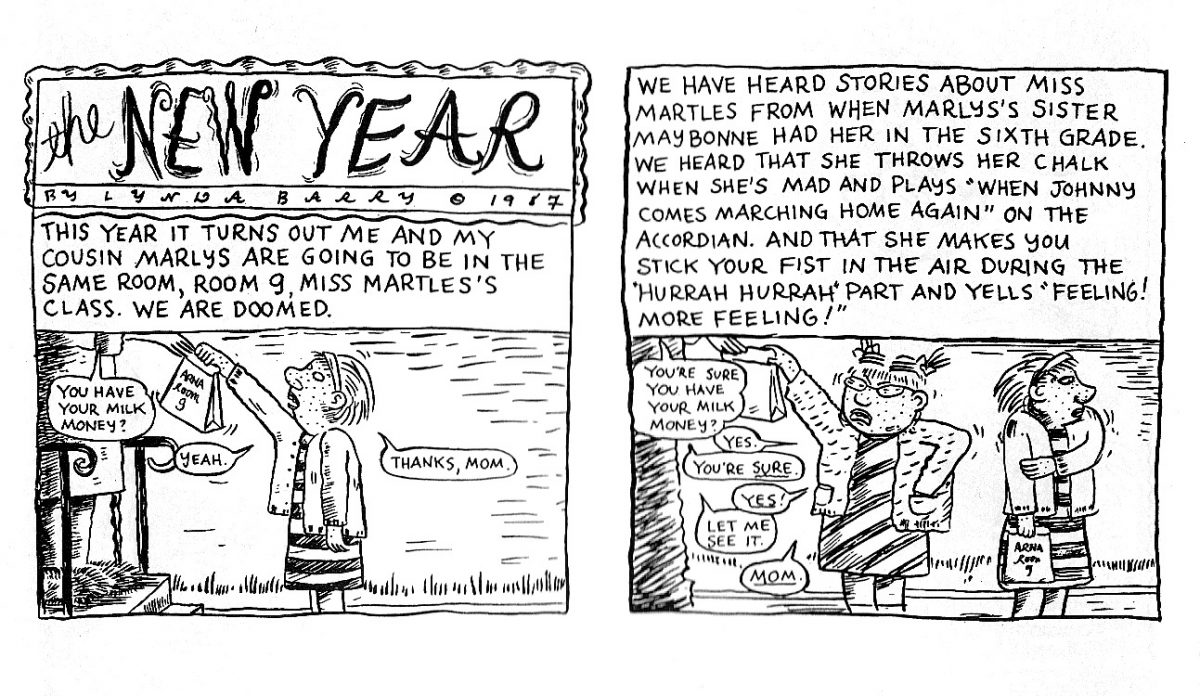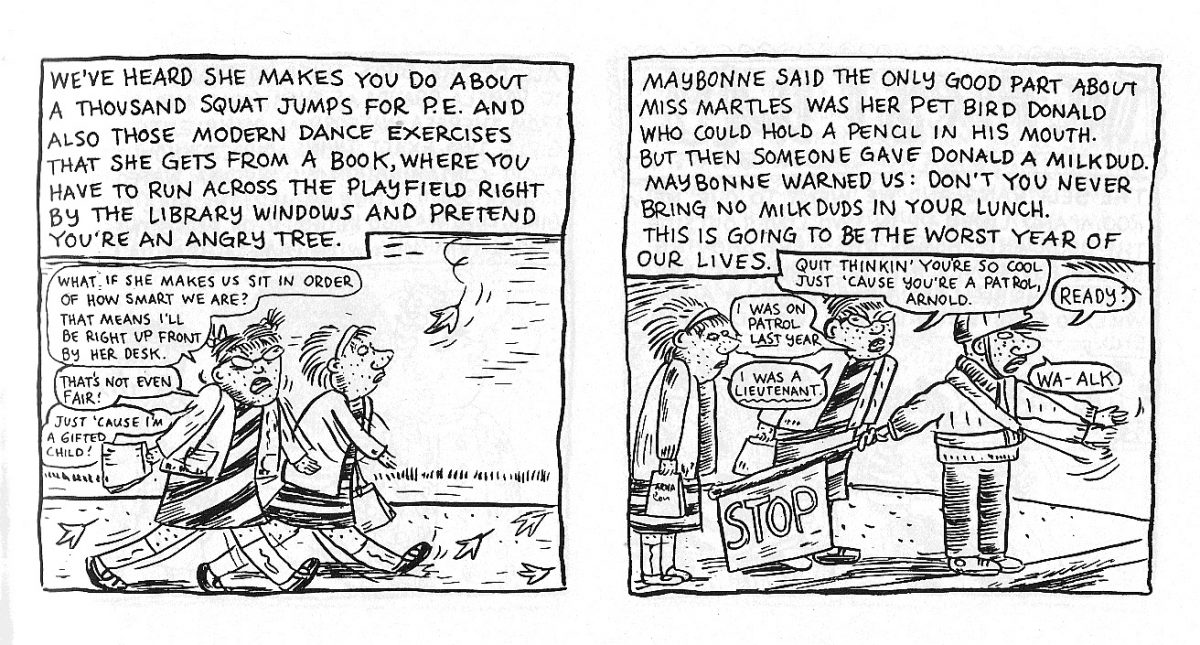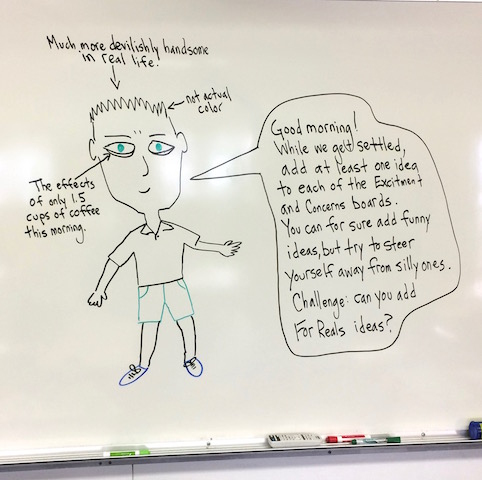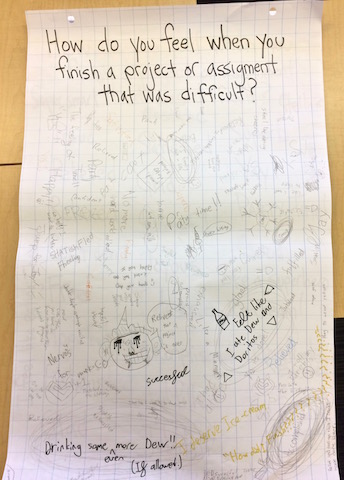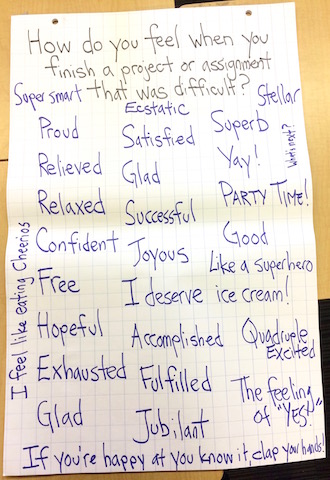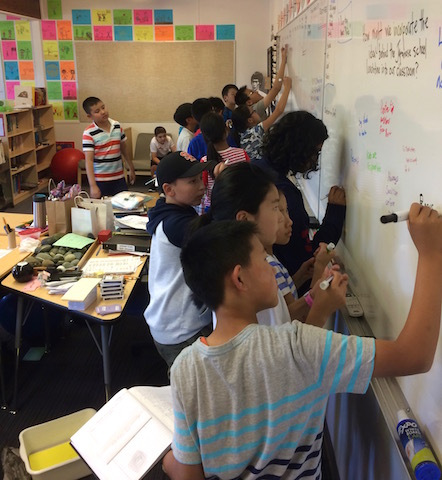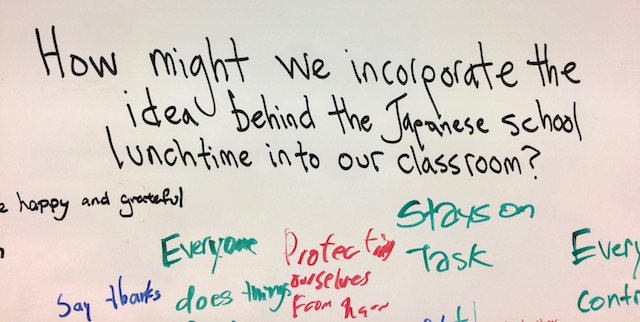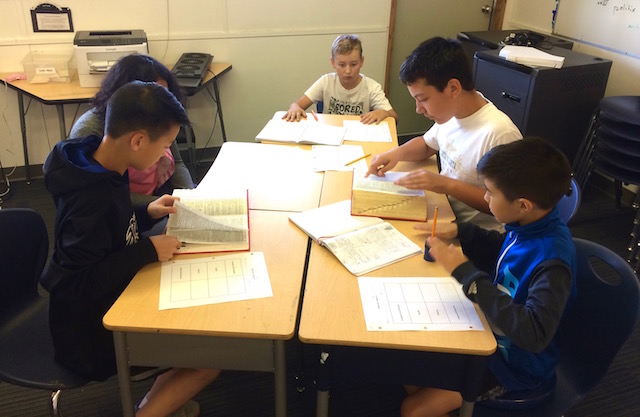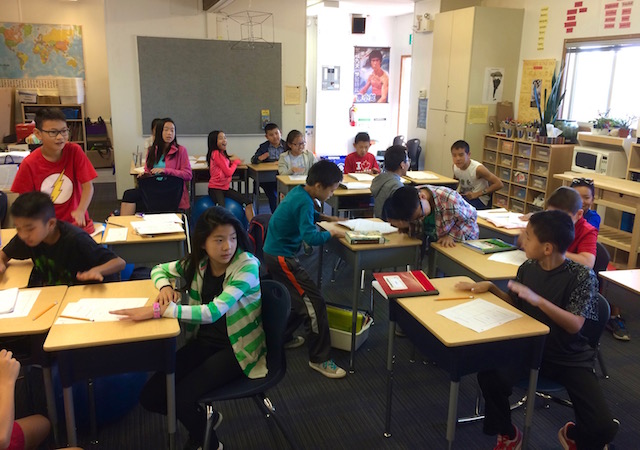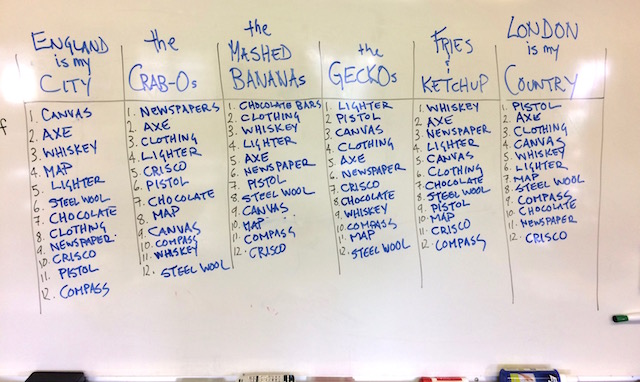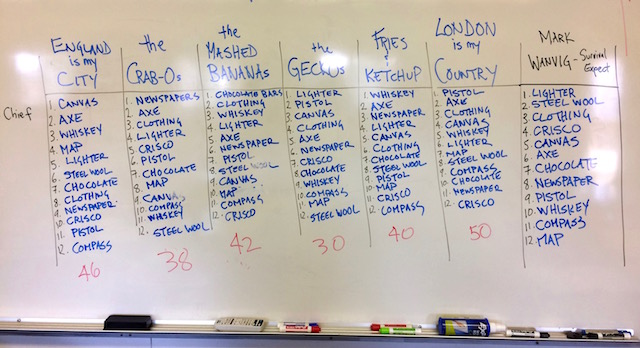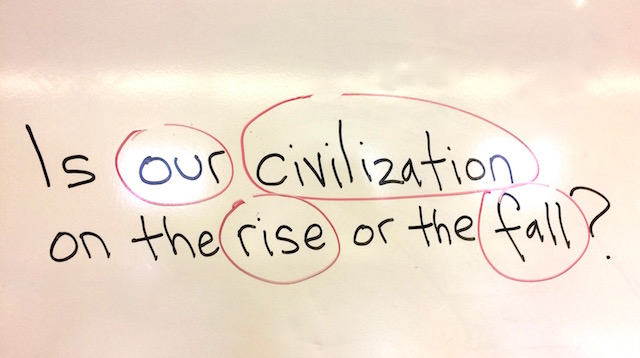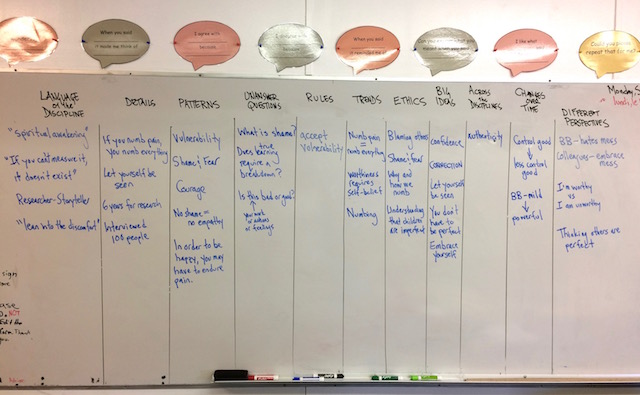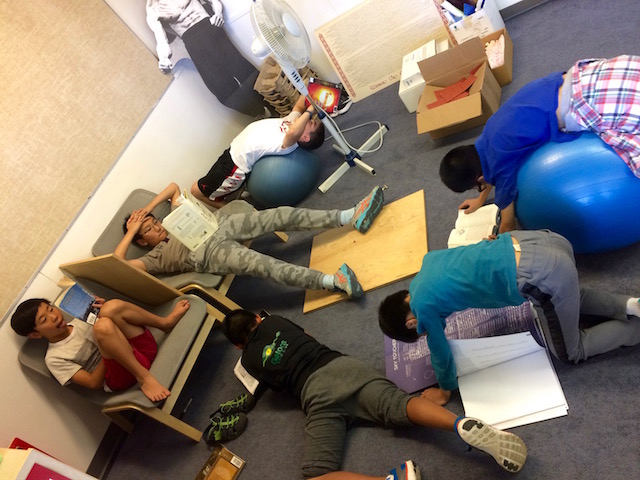A few highlights from the past few weeks:
▪ Our Class Agreement
While enrolled at a field school in Haida Gwaii, I attended an environmental education/place-based learning conference at the Haida Heritage Centre at Kay Llnagaay and had the opportunity of learning from Susan Chung, who, along with its founder, Stanley King, has developed the co-design process (aka The Social Art of Architecture), in which architects, educators, and students work together to visualize, design, and implement the building of school gardens and other multi-use school work spaces.
As someone who lives (and, if I’m not careful, will most likely die) by Oscar Wilde’s adage, “Talent borrows, genius steals,” I have experimented with incorporating their work into the building of class agreements – the basic “rules” which govern a classroom community.
I didn’t have the wherewithal to take a “before” picture, but the process began with a simple drawing of a bucolic setting on the whiteboard: a river, some grasslands and mountains, and a person in a canoe. As a class, we imagined that we had come across this beautiful place and decided we wanted to stay. Taking suggestions from students as to what we would need in order to live here, I drew additions – a cabin, sources of food and fresh water, wifi (!) – and then passed the pen off to them, to continue to add whatever they desired.
As you can imagine, this becomes a very loud and chaotic process.
In the midst of the chaos a couple of students tried to create an oasis…

But to no avail. Ladies and gentlemen, welcome to the horror of Division Two Town:
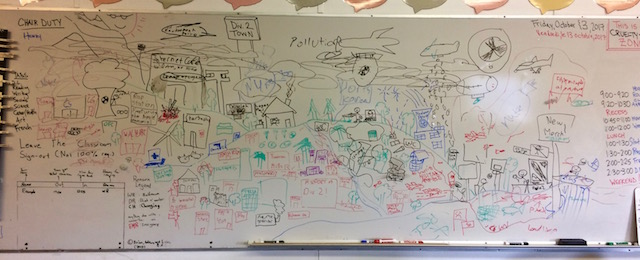
Not even the animal shelter survived, despite its force field:
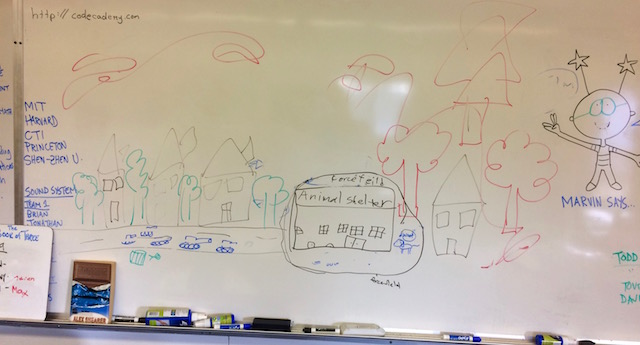
I’ll leave it to the child and adolescent psychiatrists to explain why, every time I do this exercise, it always ended with nuclear bombs falling. Things got so bad that one of the students tried to get back in the canoe and leave:
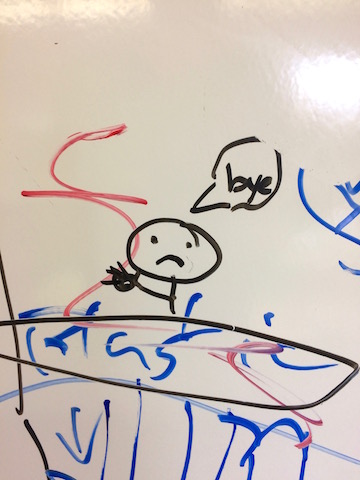
…and everyone was able to comment on the frenetic, distractive, and overwhelming feelings the activity generated.
This led to a discussion about the nature of urban sprawl – what happens when those with money do whatever they like, wherever and whenever they want to do it.
We looked at Division Two Town…

…and discussed what it would be like to live there. What would it sound like? What would it smell like? How would it feel to actually be there?
From here, we spoke about the need to create a class charter and some basic guidelines that would help us create a workspace conducive to learning. Primed by earlier brainstorming done in response to the videos we had explored (and shown in earlier blog entries) about the lunch program in a Japanese elementary school; Gabrielle Hamiltion’s restaurant, Prune; and Brené Brown’s work on vulnerability – as well as their own experience with past class agreements – students then worked in small groups to come up with a list of what they considered essential agreements…
…and we worked to combine those ideas into a list of possibilities. Armed with stickers, students each chose what they considered the top three choices…

…which we then tidied up…
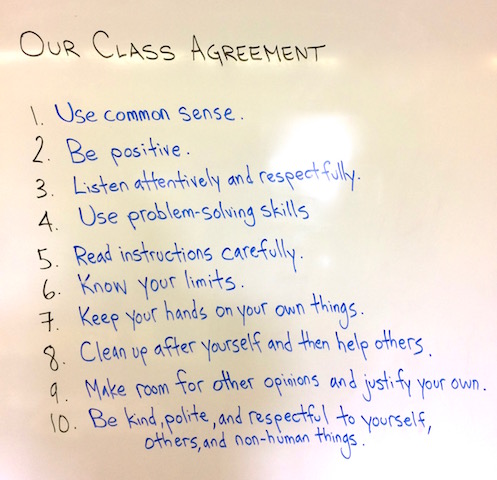
…signed…
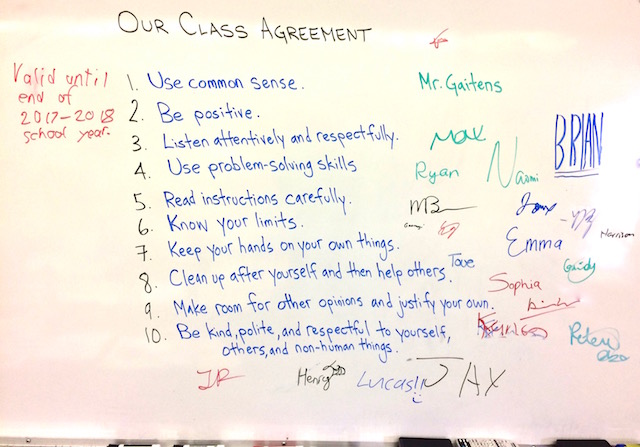
…and, hands on hearts, pledged allegiance to.
Some items are already providing to be more challenging than others, but I think you all came up with a list that would do any democratic society proud.
▪ Science Observation Experiments
After polling to the class to gauge comfortability levels with things like dirt and bugs, students were put into small groups to build a science experiment in which long-term observation of changes over time is the focus. These experiments (mostly taken from David Suzuki’s book Eco-Fun) will also give us information for subsequent science work looking at First Peoples’ knowledge of biodiversity and interconnectivity.
Once in their groups, in order to give them a sense of purpose and focus, each student chose a job: Engineer, Assistant Engineer/Safety Inspector, Lab Manager, or Deep Thinker. A description of the responsibilities of each job can be found here: observation experiment job cards
After working as a group to come up with an inquiry question with which to guide their work, the Deep Thinkers and Lab Managers worked up a hypothesis while the Engineers and Safety Inspectors got to work!
Once the building process was complete, groups then turned their attention to a close observation of their experiments, recording their work in an observation log, and also further developing their note-taking skills by conducting research into areas of choice relating to their experiments.
This work has direct ties to our writing program, in which precise, descriptive language has been our focus, taking what we learned from Wu Mei at the beginning of term and focussing on the small details in order to gain an understanding of the whole.
Our six groups are:
Plant in a Box! Will a plant grow from seed in a box, through a maze, toward a small hole letting in sunlight? Will a plant that has already sprouted in full sunlight be able to do the same?
What a Load of Rubbish! What will decompose first, a grain of rice or a banana peel? Will anything happen to a buried plastic glove? How do soil and air aid in the decomposition process?
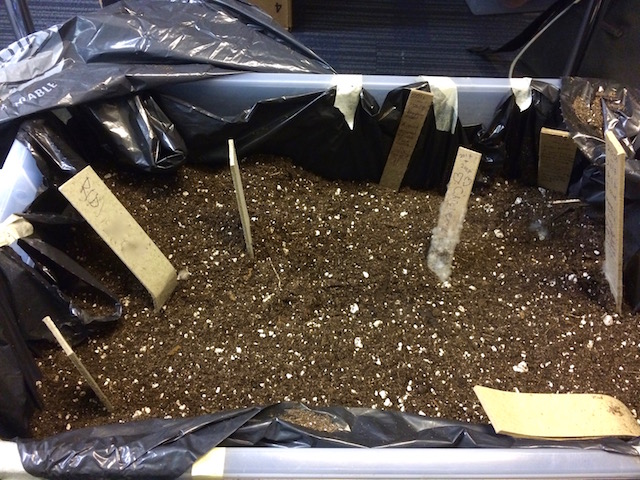
Acid Rain! What will happen if four seemingly identical plants are watered with tap water, rain water, water with a little bit of vinegar added, and water with a lot of vinegar added? How will those plants compare with succulents given the same water types?
Forest in a Jar! What will happen to a small ecosystem if it is placed in a mason jar with a set amount of water?
Worm Farm! How do worms interact with soil? Will stratified layers of soil change as a result of worm activity?
Ant Factory! ‘Nuff said.
The criteria for the observation logs can be found here: Observation criteria
The rubric for the observation experiment unit can be found here: Observation log rubric
The criteria for research notes can be found here: Research notes
▪ Ancient Civilizations
Building on the work we started with our examination of Medieval Wales, students worked in small groups to decide who, from a list of people of mixed ages, genders, and abilities/knowledge sets, should be sent by NASA to colonize an inhabitable planet in a near-by solar system, in order to rebuild human civilzaiton.
The activity sheet we worked from for this task can be found here: Socials Re-Civilization Game
After about 20 minutes of discussion, groups shared their choices and offered justification for their reasoning.
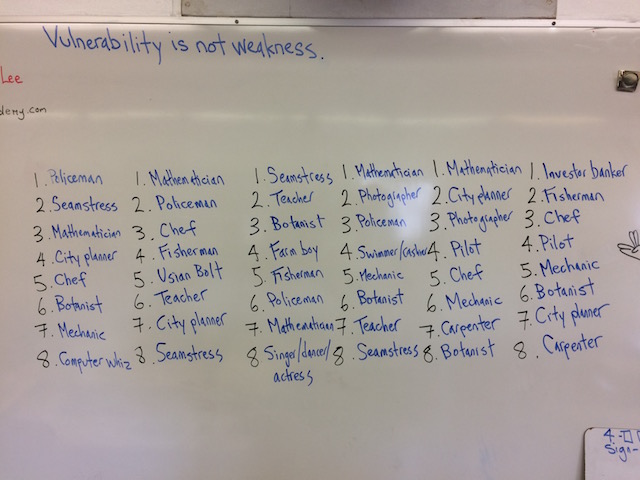
We looked at commonalities in the choices and from there built a web detailing what we thought were the defining characteristics of civilizations.
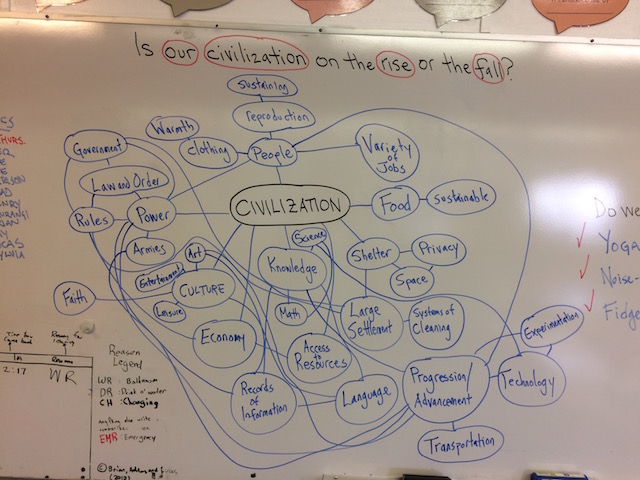
These same small groups then worked to choose an ancient civilization as their avatar for the amazing computer game, Civilization V.
These were the results:
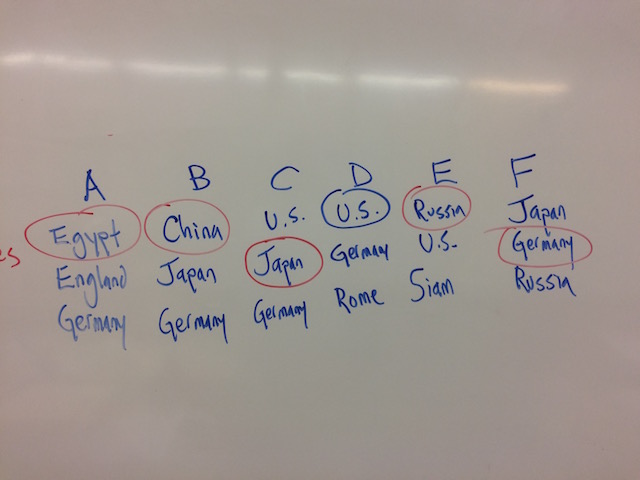
This vital choice now made, groups had their first planning session, plotting how they would attempt to win the game – through a diplomatic, cultural, or economic victory – and generated questions about their civilizaiton’s great leader, with which to fuel research and practice note-taking skills.
And after a brief tutorial by some of the grade 7s who had heroically sacrificed silent reading time to beta-test the multi-player mode of the game (ah, the things some people will do in the noble name of education…)…
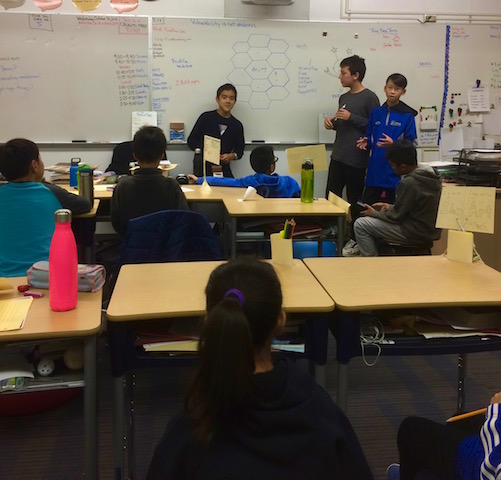
…we were good to go.
In this game, you begin with governing a small village, which you attempt to grow into a full-blown civilization through exploration, cultivation of resources, development of technology, diplomatic alliances, trade, military maneuvers, and careful city management in order to maintain the health, wealth, and happiness of your citizens.
Groups divvied up jobs – Chief Strategist, Data Control, Archivist, and Professor of History – and during game sessions we use this very well researched game to fuel discussion around topics relevant to the progression of ancient civilizations – hopefully giving students the information they will need for their subsequent analysis of our own civilization and whether it is on the rise or the fall – and groups record the immediate and long-term effects of each action that they choose to take.
Information such as the project outline and session logs can be found by visiting the Social Studies tab of this blog.
Although some times we seem to love this learning tool a little too much, it does seem to generate 100% engagement.
▪ Math
We continue with lesson and enrichment work, and continue to focus on partner work in order to share strategies and knowledge.
Thank you to Shawn from the graduating class of 2017 (and current UTP student) for allowing me to use his work as an example of clear communication of math concepts.
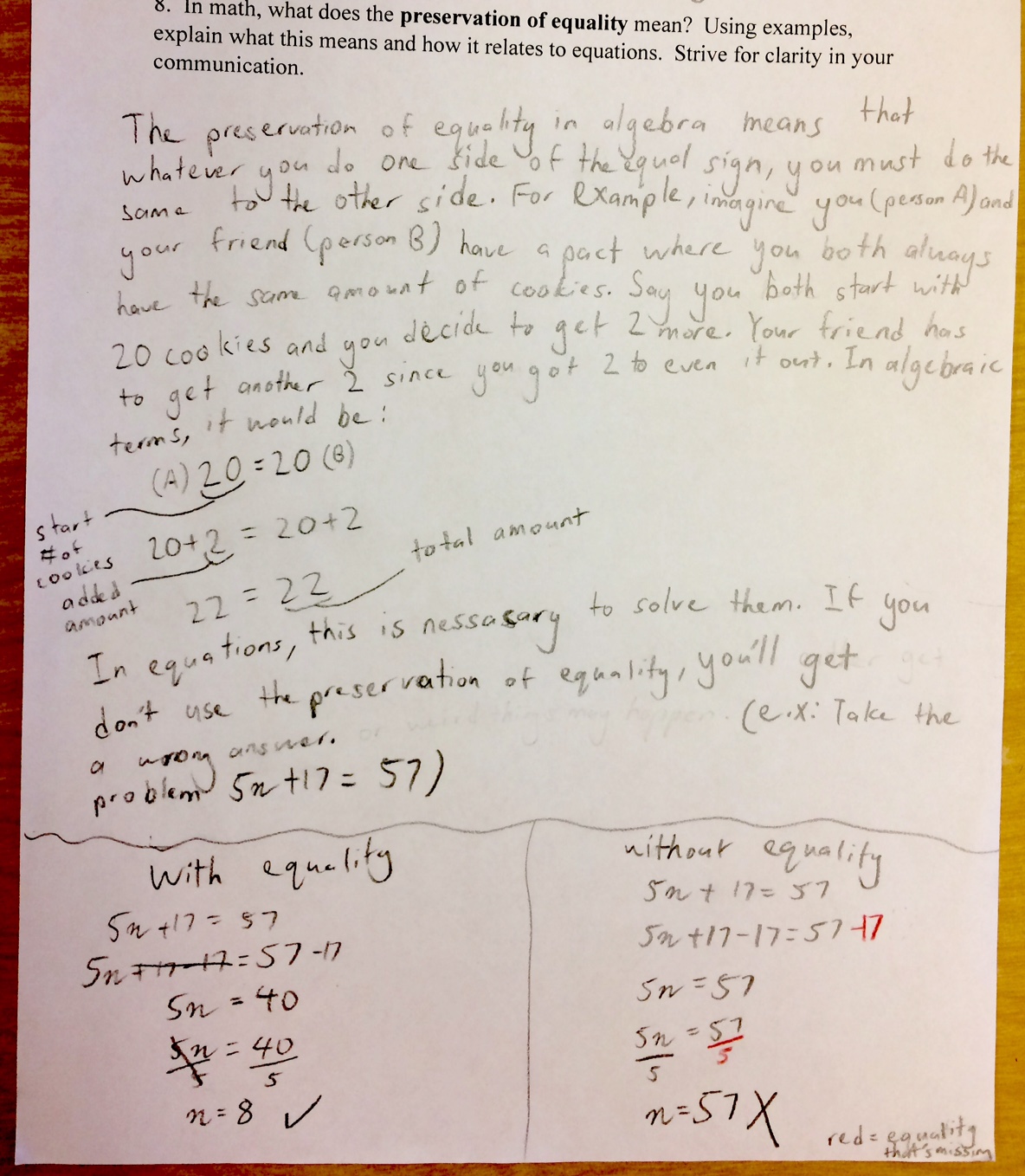
After sharing this example with the class – as well as Max’s excellent example of how to show your work with clarity and organization – the most recent assessment we did showed a huge improvement in all students’ ability to clearly communicate their understanding of various topics. Thanks, Shawn! Good work, Max!
▪ Socratic Circles
This learning technique, in which students work together to gain a deep and thorough understanding of a text, was so beneficial last year in the development of both reading and oral language learning outcomes, that we jumped right into it again this year.
In a Socratic Circle, the inner circle discusses a set text while the outer circle observes the dialogue and after gives the inner circle feedback on how they talked to and with each other; and then roles are reversed.
A copy of the chapter of Matt Copeland’s work explaining the benefits of Socratic Circles can be found here.
This term, we have been exploring Scott McCloud’s masterpiece, Understanding Comics, in preparation for our Applied Skills project, a class-made graphic novel of our current novel study, Lloyd Alexander’s classic book set in medieval Wales, The Book of Three (more on that in later posts).
These past two weeks, we have used the ideas generated in these discussions to jump into a hands-on exploration of the techniques McCloud examines, employing old Dazzler comics to look for various forms of transition (aspect-to-aspect, action-to-action, etc.) and effective ways of using word-to-picture ratios.
▪ Halloween!
Pumpkin carving made the Pumpkin Patch go from this…
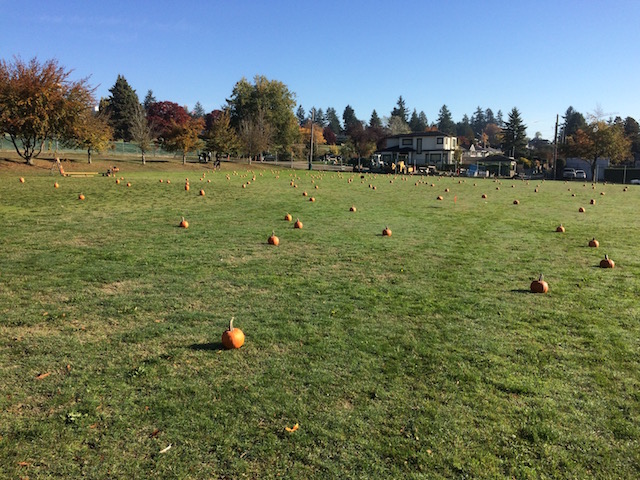
…to this:
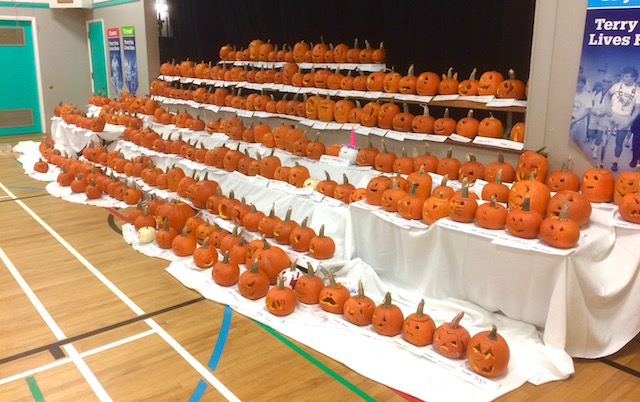
And unfortunately my old full-phone curse reared its ugly head at an inopportune time, so I only was able to capture a few of your amazing costumes, which I will use as my peace-out.
PS: Joshua, whatever that creepy body-face thing is, it has worked its way into my nightmares, both waking and sleeping. If I arrive bleary-eyed in the morning, you know who’s to blame!
























































































